Below the Surface: Identifying unique fish species
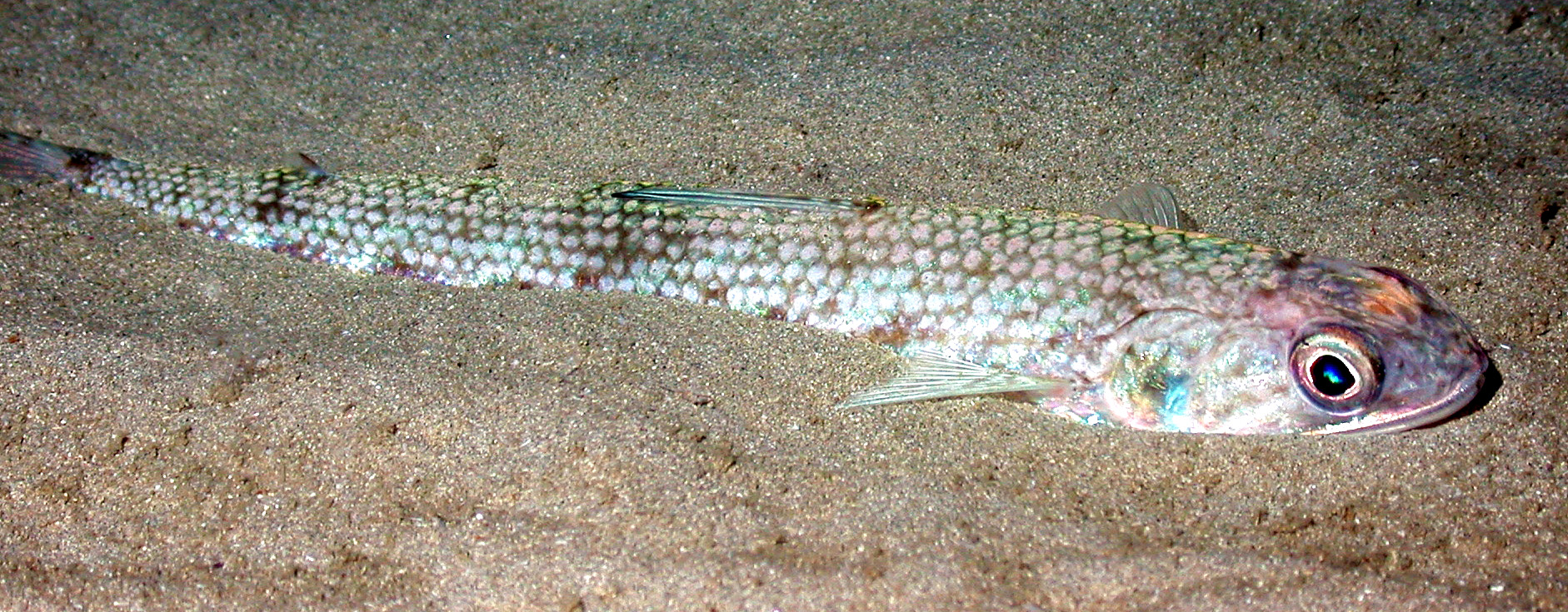
Lizardfish; by Andrew David
As a coastal fisheries biologist in Ocean City, I frequently receive a text or an email asking, “What is this fish?”
They typically come from a recreational angler or fellow scientist who has come across something beyond their experience or expertise.
It is often an easily identifiable fish like the inshore lizardfish (Synodus foetens) or northern stargazer (Astroscopus guttatus) that we frequently encounter. While otherworldly looking to the uninitiated, they are quite common in our biological surveys.
The inshore lizardfish, as the name suggests, looks like a lizard with jagged sharp teeth. It is common in the bays and is sometimes caught by anglers fishing for flounder.
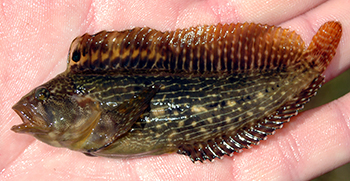
Striped blenny; staff photo
The stargazer, for lack of a better description, is shaped like a Dutch shoe with eyes on the top of its head. If you see one, you can just picture this fish staring into the night sky. Be warned, however, the stargazer can deliver a noticeable electric shock if touched just right between the eyes.
Some calls get a little more interesting.
A frankenfish’s doppelganger
When snakeheads appeared in Maryland back in 2004, we received calls from people catching them all over the place. Many turned out to be striped (Chasmodes bosquianus) or feather (Hypsoblennius hentz) blennies. This small fish of no more than 4 inches prefers enclosed areas as its home. The little blenny, while it cannot cross land like a true snakehead, is very aggressive for its size and thinks nothing of biting and hanging on to your finger. It is so small that this is more comical than problematic.
Common ground
Sometimes, the made-up names are the best. I was on a group trip where a little boy kept saying he wanted to catch a “bird fish.” I had no idea what he was talking about, and I must admit, it was driving me a little crazy. Finally, to both of our delight, he caught one. It turned out to be a striped sea robin (Prionotus evolans). Its pectoral fins in the front are wide like wings and have little fingers on the front edge they use to walk along the bottom surface. I should have known: sea robin, wings—I just didn’t put it together until he caught one.
From the deep
Every now-and-then a fish from the deep, such as the short bigeye (Pristigenys alta) or the spotfin butterflyfish from down south (Chaetodon ocellatus) pays Maryland a visit. The short bigeye looks like one of those deep sea creatures you see in National Geographic with really big eyes and a flame red color. It is a small fish when we see it, no more than 4 or 5 inches long.
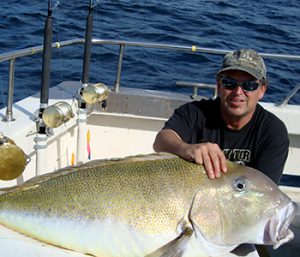
Steven with golden tile; staff photo
The spotfin butterflyfish is the same butterflyfish you see in aquariums or in the Caribbean when you go snorkeling. It is, in my opinion, the prettiest fish we catch in the Maryland coastal bays. It arrives with the tide as larva in the fall by riding gyres of water that are spun off from the Gulf Stream. We determined this by catching a few seining that were less than 10 millimeters. The unfortunate part is that we think it may be a one way trip, as how would such a small fish make it all the way back south in the winter?
Morphing wonders
Some fish come into the bays looking like one thing and leave months or years later looking quite different, like the American eel (Anguilla rostrata) or summer flounder (Paralichthys dentatus). The American eel is born in the Sargasso Sea, far from our port in the southeast Atlantic. It rides ocean currents and enters the inlet as a completely transparent fish (leptocephalus), 4 inches long and shaped like a willow leaf. It then settles out and morphs into the familiar eel shape.
The summer flounder we catch and frequently dine on has both eyes on one side of its head and lays flat on the bottom. The top side is a mottled brown; the side that lies on the bottom is pure white. But it does not enter the bay shaped and colored this way. It actually looks like a tiny guppy when it arrives and swims upright with eyes on opposite sides of its head. Over time, one eye migrates to the other side of its head, and it settles to the bottom to begin its life as a flatfish.
From the deeper
Recently, fishermen have started to fish in much deeper water and the fish species found there are much more unique. This past fall and winter, some anglers fishing for swordfish in depths of 1,500 feet caught an opah (Lampris), a fish most frequently associated with deep waters around the Hawaiian Islands. These fish have likely always been off the coast of Ocean City, just no one was fishing deep enough for them.
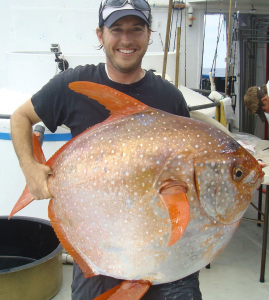
Opah; courtesy of NOAA
Also found in the deep off Ocean City are golden tilefish in water between 800 and 1,200 feet. They have a beautiful, almost paisley pattern on their sides. Adult snowy grouper (Epinephelus niveatus) are found in water around 600 feet deep. They are a deep black color with what looks like stars of white on their sides. Anglers were amazed several years ago when they started catching baby snowy grouper in their crab pots from the Route 50 bridge.
Getting notice of one of these strange fish to identify is one of the most fun parts of my job. I have a file of previously unknown fish and a network of biologists and fishermen who share strange fish pictures when one pops up. Social media pages are often helpful when an unknown fish needs to be identified. Before the internet, it was much harder to identify unknown fish because you had to know the name before you could look for a picture.
Because there are more than 26,000 known species of identified fish—which is very close to the same number as all the other known species of animals added together—the parade of new characters never stops.
Just think: the average depth of the oceans is 7 miles, and we have just begun to explore the top 1 mile. There are many new species yet to be discovered.
Article by Steven Doctor—Fishing and Boating Services biologist. Appears in Vol. 21, No. 3 of the Maryland Natural Resource magazine, summer 2018.

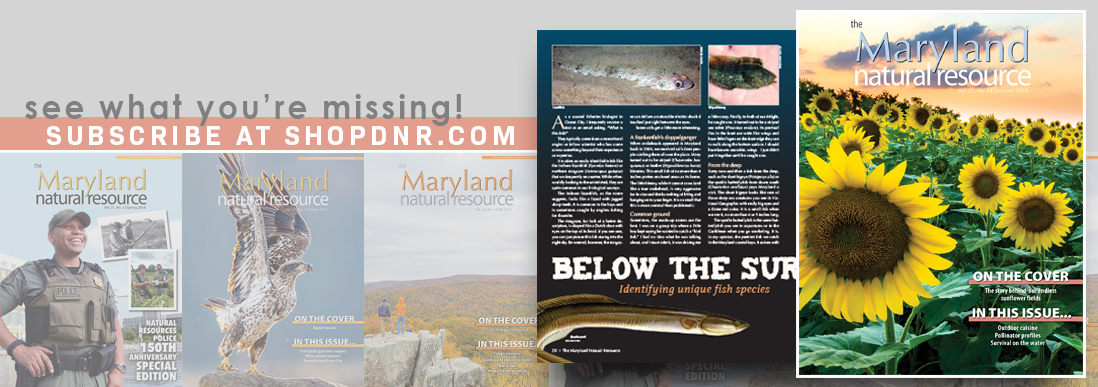
 1-888-373-7888
1-888-373-7888 233733
233733